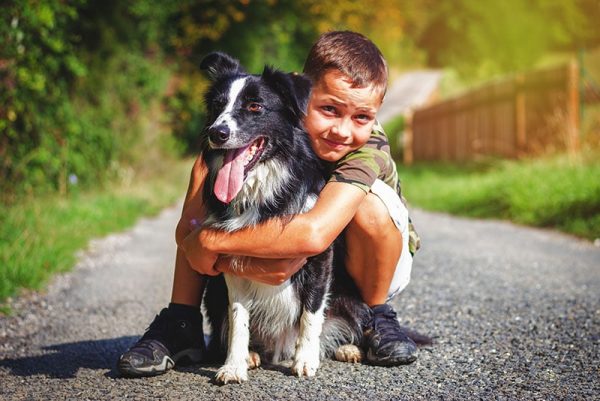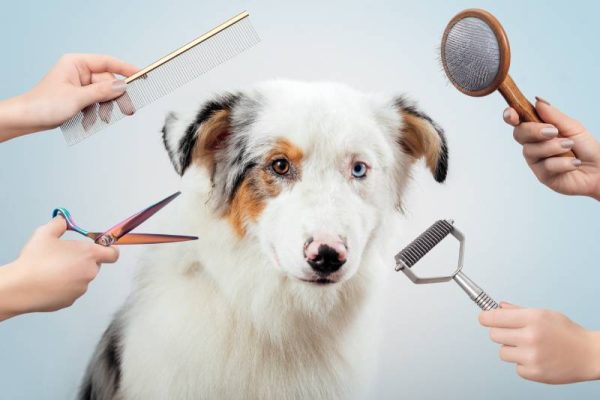In this article
Beagles can make great first-time dogs for the right family. They are one of the lower-maintenance breeds widely available today, so they are often recommended for those new to taking care of dogs. After all, when you’re learning to care for a dog, it is best that the breed is as uncomplicated as possible. Beagles are also medium-sized. They aren’t so large that they require tons of food and room, but they also aren’t lap dogs.
However, that doesn’t mean they’re the best breed for everyone. They do have some downsides, such as their tendency to follow their nose. It’s pretty easy for them to get on a trail and get lost, even with tons of training. They also have a tendency to be stubborn.
Let’s look at some of the pros and cons of Beagles for first-time owners.

The 4 Pros of a Beagle for First-Time Dog Owners
1. Temperament
Beagles have a fairly laid-back temperament. As puppies, they can be quite playful. However, when they reach adulthood, they calm down a lot. They’re typically well-behaved indoors with minimum training and aren’t aggressive. In fact, as pack dogs, they get along with just about everyone. They love strangers, but they aren’t so people-oriented that they’ll follow you around the house. They’ve very happy dogs, with the breed standard even calling them “merry.”
They’re very poor guard dogs, though, as they are easily won over by strangers. However, as a first-time owner, you likely don’t want to handle a guard dog, anyway. They’re also not terribly intelligent. They were built for tracking, and they do this very well. However, they aren’t intelligent in the typical sense of the word.
Beagles are very good with kids. Their laid-back attitude and patience allow them to put up with quite a bit. They aren’t usually scared or nervous around children thanks to their hardy nature.

2. Low Maintenance
Beagles tend to require little maintenance and minimum grooming. They do shed, so many owners give them a quick brushing a few times a week. However, they don’t require regular bathing, clipping, or professional grooming. In fact, many owners hardly brush their Beagles and get along just fine. The only serious maintenance they require is nail clippings. You should also keep their teeth clean to prevent periodontal disease, which is sadly pretty common in dogs.
Occasionally, Beagles also need their ears cleaned. Their floppy ears can trap dirt, causing infections. However, many dogs go months between ear cleanings (and some may never need them at all).
Beagles do require exercise, just like every dog. However, a moderately long walk is all they need. They aren’t as energetic as other canines and can do with less exercise, but this does put them at risk for obesity. They’re much less likely to become bored, too, so they require less mental stimulation than other canines.
3. Health
Beagles don’t have tons of health problems, especially if you purchase from a working-line breeder. Beagles were built for hunting, and hunters couldn’t utilize sickly dogs. Therefore, historically, health played a huge role in the breed’s development. Today, show-line Beagles are commonly bred for their physical attributes, while working-line dogs are still bred for health and skill.
Therefore, for most first-time owners, a working-line Beagles is the way to go. Often, these dogs are also cheaper. Beagles can live up to 15 years in many cases. Some dogs live even longer, especially from working lines.
4. Versatility
Beagles thrive just about anywhere. They do well on farms, as well as in apartments. They behave well indoors and outdoors, too, though they are prone to getting lost. Therefore, keeping them in a fenced-in yard or on a leash is recommended.
This breed is extremely adaptable, so dog owners in a range of environments can successfully own one without a problem.


The 4 Cons of a Beagle for First-Time Owners
Beagles aren’t perfect, though. There are a few cons you have to consider before adopting one.
1. Loud
Beagles don’t tend to bark all that often. They aren’t as yappy as many toy dogs. However, when they do bark, they are very loud. They don’t bark in the traditional manner. Instead, they bay, which is a cross between a bark and a howl. Their bay was developed to travel far so that their masters could find them in the woods. It still travels far today.
Luckily, though, they don’t bark as much as other dogs, and there likely aren’t any rabbit trails in your house.
2. Noise-Driven
Beagles are driven by their nose to the point of ignoring everything else. If your Beagle locates a scent trail, they will follow it. Usually, the scent trails of rabbits and some other prey animals are most smelly, but some Beagles may even “track” cats and other dogs. When on a trail, Beagles won’t listen to commands or pay attention to where they’re going. Therefore, they can easily become lost and unable to find their way back home.
You can counteract this by keeping them on a leash or fenced-in yard. However, don’t expect them to come when called.

3. Health
While Beagles are pretty healthy, they are prone to some health problems. Most of these issues are directly tied to genetics. Therefore, with proper breeding, they can be avoided. For instance, they are somewhat prone to epilepsy, but it is often controllable with medication. Hypothyroidism can run in some Beagle lines.
This breed has two conditions that are completely unique to them. The first is “funny puppy,” which causes puppies to regress in development, develop weak legs, and cause other illnesses. The second is MLS, which is a developmental disorder that causes the eyes to be slanted. Luckily, puppies with MLS don’t suffer due to the disease; it’s purely aesthetic.
Beagles have a long back and shorter legs—a bit like a Dachshund but less pronounced. Therefore, they are prone to back injuries, as their spine isn’t as well-supported by their legs as other dogs.
Obesity remains a common problem with Beagles, especially since they tend to be rather lazy when kept as companions. They are extremely food-driven, so you’ll need to be careful with portion sizes. Beagles will overeat if you let them.
4. Stubborn
Beagles are incredibly stubborn. They were bred to track purely based on instincts—not training. Therefore, early breeders didn’t consider the dog’s trainability when breeding the next generation. Hunting instincts and health were more important.
Today, the breed tends to have a mind of its own and doesn’t take well to obedience. Luckily, these dogs are well-behaved with little training, so their stubborn attitude isn’t usually a problem. However, you cannot expect them to excel in obedience. Still, we do recommend teaching them basic commands, especially “leave it.”

Conclusion
Beagles are low-maintenance, friendly dogs that don’t require any specialized care. They’re pretty healthy and family-friendly. All of these traits combine to make them suitable dogs for first-time owners. They’re very forgiving and well-behaved, so early socialization or training mistakes won’t be a big deal. These dogs are even better when adopted from a quality breeder, as this helps prevent health issues and improves the chance of a friendly temperament.
Of course, this breed isn’t perfect. They are prone to some health conditions, but many of these are directly related to genetics. Therefore, they can be avoided by choosing a good breeder. They also aren’t bred for their trainability and tend to be quite stubborn. Beagles have very strong tracking instincts and will follow their nose to the end of the earth. So, they’re prone to getting lost and can’t be left to wander.
See also:
- Do Beagles Like Water? Breed Preferences & Swimming Tips
- Famous Beagles From Around the World (With Pictures)
Featured Image Credit: Alexey Androsov, Shutterstock


















